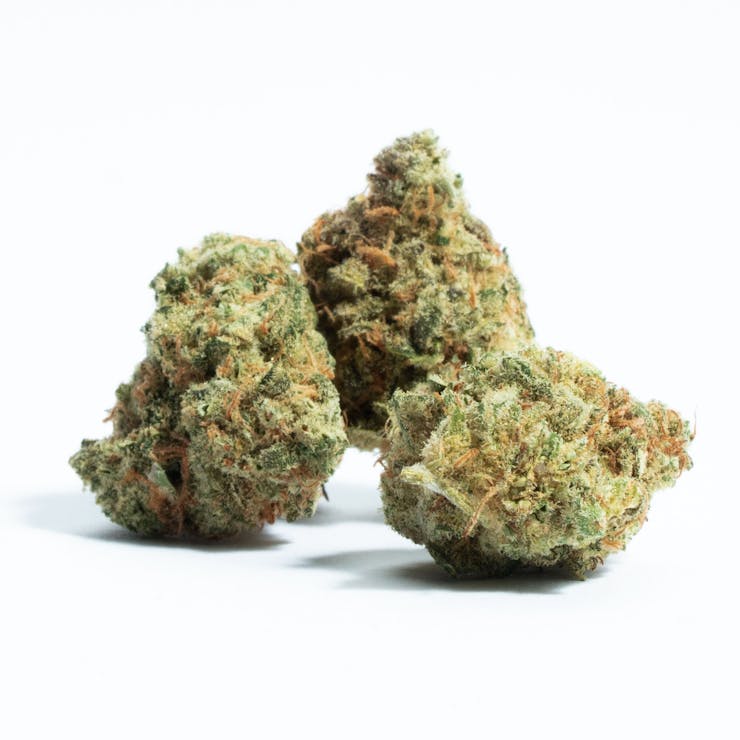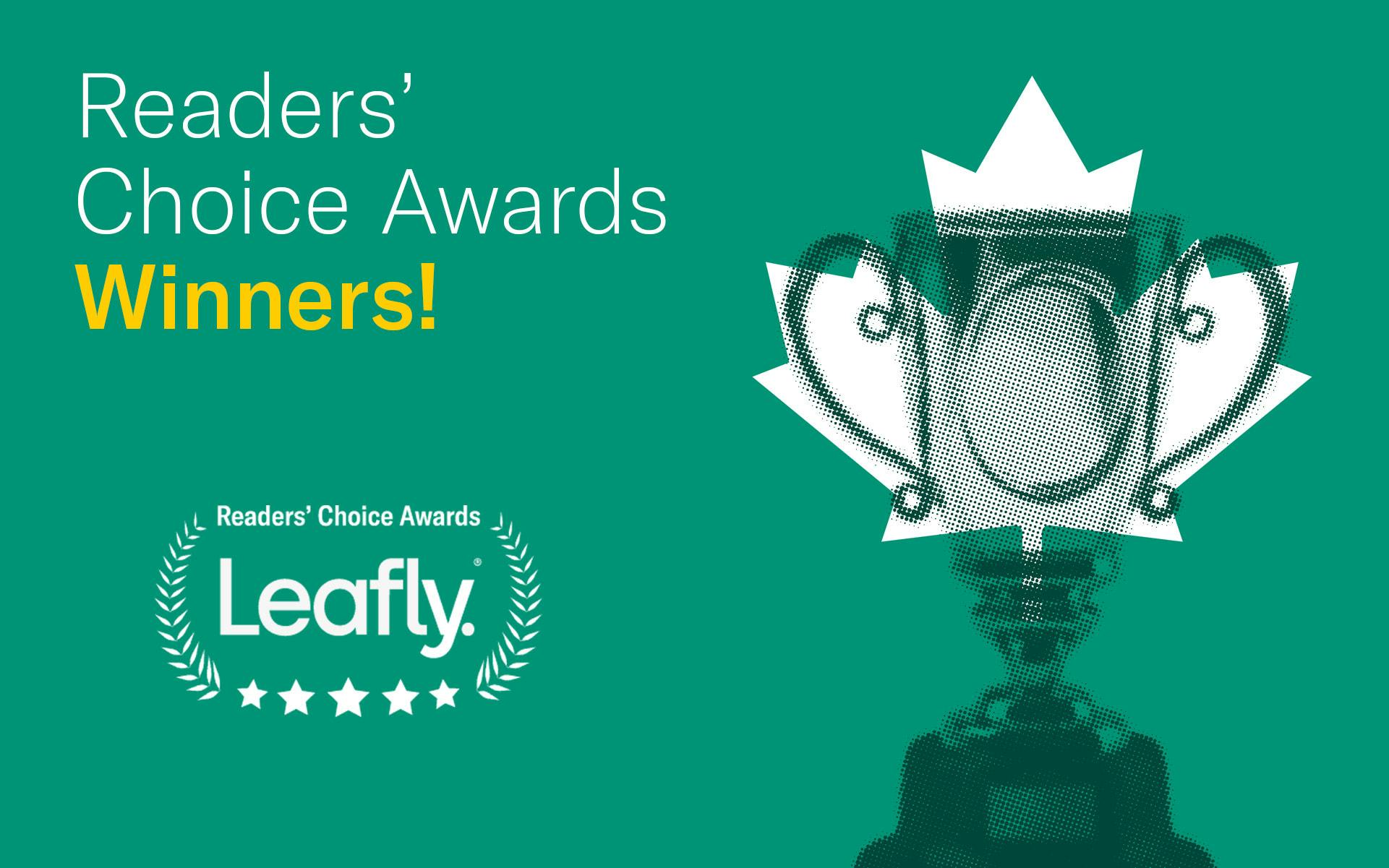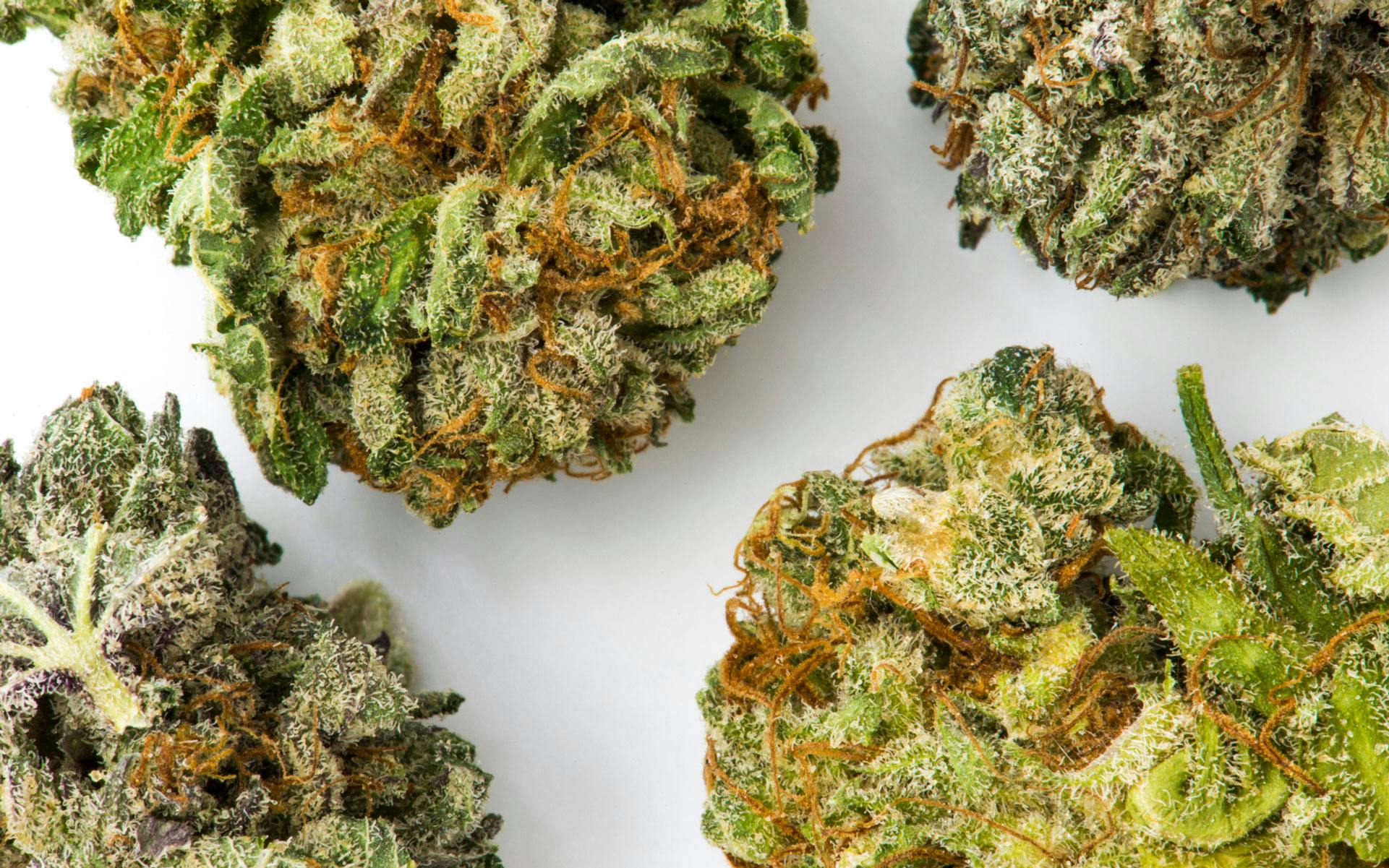Pink Kush: it smells good, looks good, burns good—and, according to Leafly reviewers, it feels oh so good.
Also rightly called Pink God, because the hairs are pink and it makes you feel embraced by god.
Grown and produced right across the country, this well-known strain is a huge hit in Canada and the second-most searched for strain among Canadian readers, right after Blue Dream. But surprisingly, the Pink Kush love isn’t felt as strongly in the US, where its search popularity sinks into the hundreds.
Canadians and Americans share an abundance of socio-cultural similarities, including amazing national parks, an obsession with organized sports, and a love for mac and cheese. So what could be driving the dissonance in our weed preferences?
A closer look at Pink Kush reveals little in the way of an answer. Its Canadian story begins like most legends, with rumour and speculation forming a loose history not everyone can agree on.
A simplified family tree begins with Hindu Kush, a sedating landrace strain named after its Himalayan origin. That mother strain gave rise to American-made OG Kush, a generally agreed upon close relative—if not direct parent—of Pink Kush.
The Kush cannabis family made its way into BC via the US in the mid- to late-2000s, according to Kyp Rowe of Shelter Brands. “As the Kush craze hit the West Coast of the US, there were a lot of stories stating one of these OG cuts made it up to BC,” he explains. “This could explain [Pink Kush’s] origin, but quite frankly without hard lab data and a chain of custody all cultivar lineage explanations are simply someone’s story.”
Once Pink Kush made its BC debut, word of its potency spread fast. Rowe says cloning houses on the Sunshine Coast, Interior, and Kootenays quickly proliferated the strain en masse since growers could get much higher prices for it, while consumer demand made it easy for brokers to buy and sell. Says Rowe: “It was Pink Kush, then all the rest.”
But is it really pink?
Forget the name for a second. The Pink Kush experience starts with scent. “You cannot beat the smell,” says Michelle Tafler, Aurora Cannabis’s senior director of branding. The company’s San Rafael ’71 Pink Kush is one of Aurora’s top sellers. “It has a very beautiful, earthy pine aroma with hints of citrus,” explains Tafler.
A close inspection of the small dense buds reveals pink-hued hairs under frosty trichomes. Tafler confirms its unique pink colour inspired the memorable street name, though she notes that Aurora’s San Rafael ’71 product has more of a purple hue.
Where Pink Kush really delivers is in its effect: a powerful, full-body narcotic feeling mostly thanks to its high THC content, which can range anywhere between 20% to 30%.
Tafler calls it “calming and relaxing.” Rowe describes it as a “night-time knockout.” Habitat Craft Cannabis CEO Rudi Schiebel qualifies the Pink Kush experience as “an efficient high if you want to have a cannabis experience that doesn’t put you out, but is also very intense.” That intensity inspired Habitat to breed Pink Kush into some of their hybrids to create a heavy-hitting line of craft cannabis they named Caviar.
Shop highly rated dispensaries near you
Showing you dispensaries nearWhy so much love in Canada?
After a solid decade of popularity with no sign of stopping, does Pink Kush reflect a uniquely Canadian preference, like that for bagged milk and ketchup chips? Or does our love of this strain reveal nothing more than market naïveté?
Thanks to its raging popularity in the legacy market, Pink Kush became a household name synonymous with “couch lock.” Today, with Canada’s strict labeling laws making it hard for consumers to decipher one product from another, Pink Kush’s street reputation is just as valuable as its THC levels on the label.
Schiebel compares this to the US, especially California, where experiences and effects based on terpenes and other cannabinoids beyond THC are more easily shared by growers. Growers and retailers in the States, he says, “are a little more free to talk about those types of things and move to more of a terroir craft production, so to speak, whereas Canada has been limited to warning labels.”
Our affinity for Pink Kush may also stem from its origins on the Pacific coast, where notoriously good BC bud was born regardless of strain or cultivar. But Rowe notes that Pink Kush came onto the scene long after the original BC bud craze of the 90s.
A super consistent strain
Or maybe Canadians just like consistency, which is one of Tafler’s theories as to why Pink Kush sells so well: “The effects aren’t going to vary with the strain or the batch,” she says. “It’s a super consistent product which I believe is one of the secrets to its success.”
My first hit of this brought me home. I felt like the person I’d been searching for and hadn’t found, until Pink Kush.
Just like with food or wine, however, consumer tastes for weed are constantly shifting and changing, and Pink Kush may naturally cycle out of favour. Schiebel suspects it’s already happening: “It is very cyclical; there are well-known strains like Bubba Kush, Master Kush and Rockstar Kush that’ve all had their time in the sun.”
With an eye on cannabis terroir-obsessed California—where food and wine trends also trickle out from—Schiebel’s team is confident Canadian consumers will also grow more curious about where their weed is grown, how it’s grown, and more nuanced things like phenotyping. In other words, Pink Kush won’t be forgotten, but will make way for newer, sexier strains that appeal to a more selective market.
For Tafler, though, Pink Kush already satisfies consumers with discriminating taste. “We know people who enjoy Pink Kush are consumers who understand cannabis and cannabis culture and are very discerning critics themselves.” As for why it’s so much more popular in Canada than the US, she postulates maybe we’re just more picky about euphoric experiences. “I’m not entirely sure,” she says, “but we do know that Canadians love it.”
Watch Leafly TV
Click here to discover more videos on Leafly TV.







